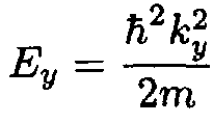
تاريخ الفيزياء

علماء الفيزياء


الفيزياء الكلاسيكية

الميكانيك

الديناميكا الحرارية


الكهربائية والمغناطيسية

الكهربائية

المغناطيسية

الكهرومغناطيسية


علم البصريات

تاريخ علم البصريات

الضوء

مواضيع عامة في علم البصريات

الصوت


الفيزياء الحديثة


النظرية النسبية

النظرية النسبية الخاصة

النظرية النسبية العامة

مواضيع عامة في النظرية النسبية

ميكانيكا الكم

الفيزياء الذرية

الفيزياء الجزيئية


الفيزياء النووية

مواضيع عامة في الفيزياء النووية

النشاط الاشعاعي


فيزياء الحالة الصلبة

الموصلات

أشباه الموصلات

العوازل

مواضيع عامة في الفيزياء الصلبة

فيزياء الجوامد


الليزر

أنواع الليزر

بعض تطبيقات الليزر

مواضيع عامة في الليزر


علم الفلك

تاريخ وعلماء علم الفلك

الثقوب السوداء


المجموعة الشمسية

الشمس

كوكب عطارد

كوكب الزهرة

كوكب الأرض

كوكب المريخ

كوكب المشتري

كوكب زحل

كوكب أورانوس

كوكب نبتون

كوكب بلوتو

القمر

كواكب ومواضيع اخرى

مواضيع عامة في علم الفلك

النجوم

البلازما

الألكترونيات

خواص المادة


الطاقة البديلة

الطاقة الشمسية

مواضيع عامة في الطاقة البديلة

المد والجزر

فيزياء الجسيمات


الفيزياء والعلوم الأخرى

الفيزياء الكيميائية

الفيزياء الرياضية

الفيزياء الحيوية

الفيزياء العامة


مواضيع عامة في الفيزياء

تجارب فيزيائية

مصطلحات وتعاريف فيزيائية

وحدات القياس الفيزيائية

طرائف الفيزياء

مواضيع اخرى
Electric and Magnetic Fields
المؤلف:
Sidney B. Cahn, Gerald D. Mahan And Boris E. Nadgorny
المصدر:
A GUIDE TO PHYSICS PROBLEMS
الجزء والصفحة:
part 2 , p 79
14-8-2016
1497
Electric and Magnetic Fields
Consider a particle of mass m and charge e which is in perpendicular electric and magnetic fields: E = |E|ẑ, B = |B|ŷ.
a) Write the Hamiltonian, using a convenient gauge for the vector potential.
b) Find the eigenfunctions and eigenvalues.
c) Find the average velocity in the x-direction for any eigenstate.
SOLUTION
a) Many vector potentials A(r) can be chosen so that For the present problem the most convenient choice is
For the present problem the most convenient choice is  Thus the Hamiltonian is
Thus the Hamiltonian is
 (1)
(1)
The above choice is convenient since only pz fails to commute with H, so px and py are constants of motion. Both potentials have been made to depend on z.
b) Since px and py are constants of motion, we can write the eigenstates and energies as
 (2)
(2)
 (3)
(3)
 (4)
(4)
 (5)
(5)
The last equation determines the eigenvalue Ez and eigenfunctions ѱ(z). The potential is a combination of linear and quadratic terms in z. So the motion behaves as a simple harmonic oscillator, where the terms linear in z determine the center of vibration. After some algebra we can write the above expression as
 (6)
(6)
So, we obtain
 (8)
(8)
The total energy is Ez plus the kinetic energy along the y-direction. The z-part of the eigenfunction is a harmonic oscillator ѱn(z – z0).
c) In order to find the average velocity, we take a derivative with respect to the wave vector kx:
 (9)
(9)
This is the drift velocity in the x-direction. It agrees with the classical answer.
 الاكثر قراءة في مواضيع اخرى
الاكثر قراءة في مواضيع اخرى
 اخر الاخبار
اخر الاخبار
اخبار العتبة العباسية المقدسة

الآخبار الصحية















 قسم الشؤون الفكرية يصدر كتاباً يوثق تاريخ السدانة في العتبة العباسية المقدسة
قسم الشؤون الفكرية يصدر كتاباً يوثق تاريخ السدانة في العتبة العباسية المقدسة "المهمة".. إصدار قصصي يوثّق القصص الفائزة في مسابقة فتوى الدفاع المقدسة للقصة القصيرة
"المهمة".. إصدار قصصي يوثّق القصص الفائزة في مسابقة فتوى الدفاع المقدسة للقصة القصيرة (نوافذ).. إصدار أدبي يوثق القصص الفائزة في مسابقة الإمام العسكري (عليه السلام)
(نوافذ).. إصدار أدبي يوثق القصص الفائزة في مسابقة الإمام العسكري (عليه السلام)


















